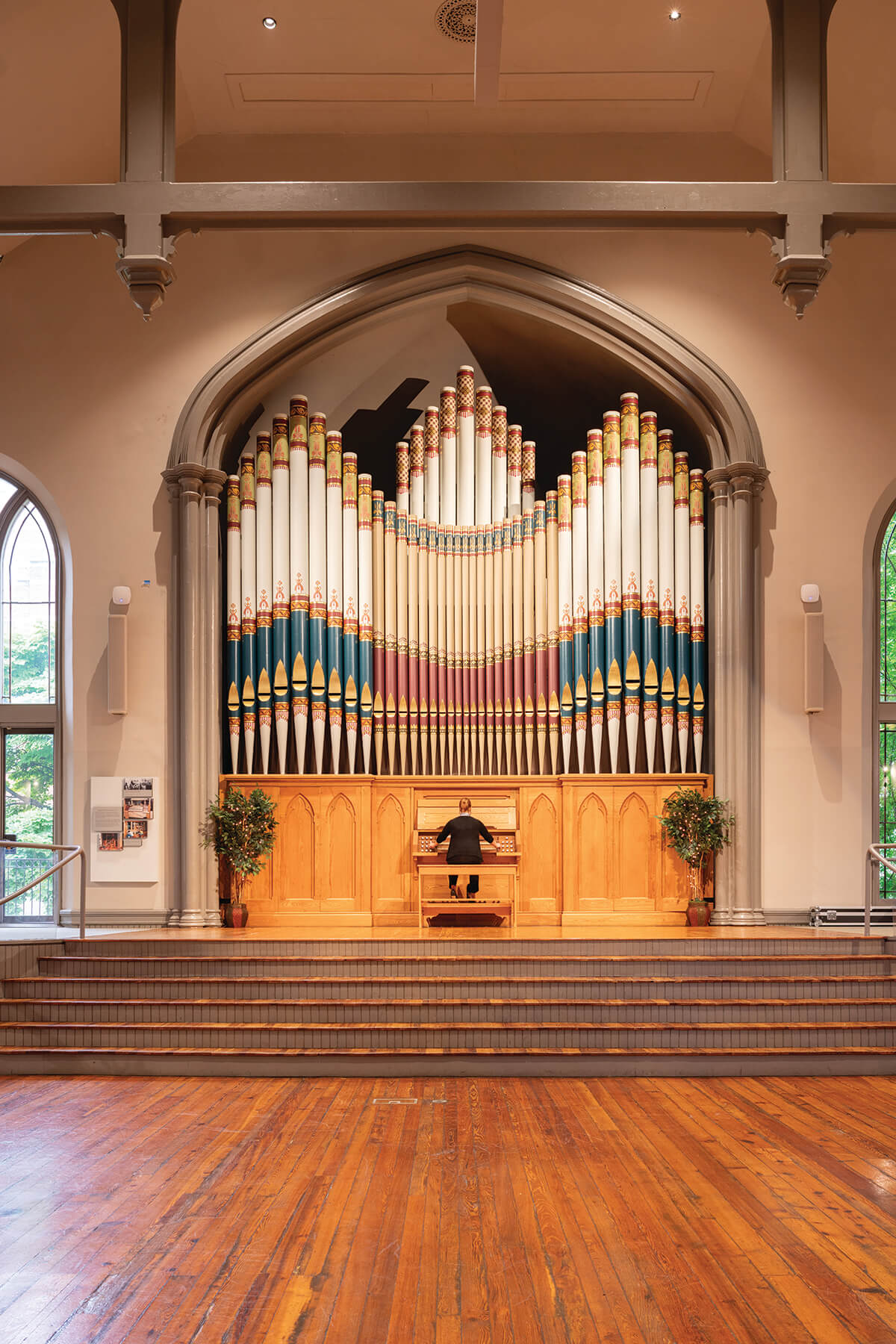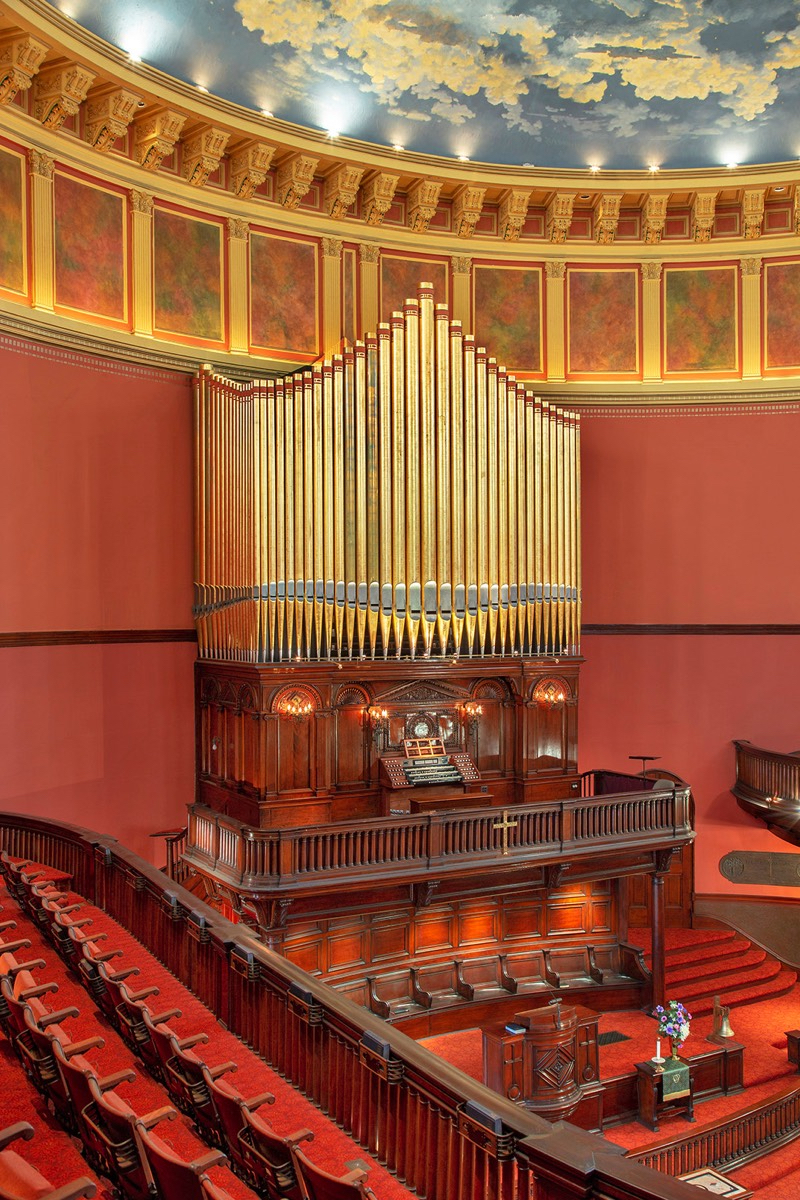Arts & Culture
Pipe Dreams: Baltimore Was a 19th-Century Hub of American Organ Building
This month, the Organ Historical Society convention comes to town. With the Archdiocese of Baltimore church consolidation plans underway, it may be the last time several historic organs are heard.

“This is a bit of a fantastical description, but a pipe organ is an automaton with a mind of its own,” says Mary Mardarelli. “It’s an extension of yourself that you are effectively breathing life into to make it be artistic.”
A Peabody-trained musician and pulmonary and critical care fellow at the University of Maryland Medical Center, Mardarelli knows something about breathing life into organs.
At Westminster Hall, conveniently located near her day job, she essentially serves as house organist for the revered venue’s 1882-built, 1,300-pipe instrument (pictured above).
“It’s a wonderful opportunity to make floors shake and windows rattle or to just whisper very, very quietly.”
This month (July 21-26), the Organ Historical Society convention comes to Baltimore, hosting numerous performances at historic churches and other locales, many open to the public. With the Archdiocese of Baltimore church consolidation plans underway, it may be the last time several organs are heard.
“I recently had the absolute joy and privilege to play a wedding at a Catholic church, St. Mary, Star of the Sea, which has a gorgeous 100-year-old Casavant [organ],” Mardarelli says. “There are some beautiful instruments in the city that are just little hidden gems.”
